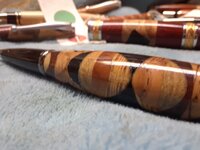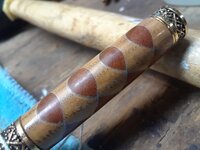HopeAndGracePens
Member
Have a very specific issue. Searched some threads but no luck (please link if answered already). Sometimes with segmented pens, the seams become pronounced to the eye and/or touch with a CA finish. This happens over days/weeks/months, so assume it's humidity expanding/contracting the wood at different rates due to species.
Segmented turners, how do you overcome this?
Is there a finish that is both durable and will prevent this?
Segmented turners, how do you overcome this?
Is there a finish that is both durable and will prevent this?


